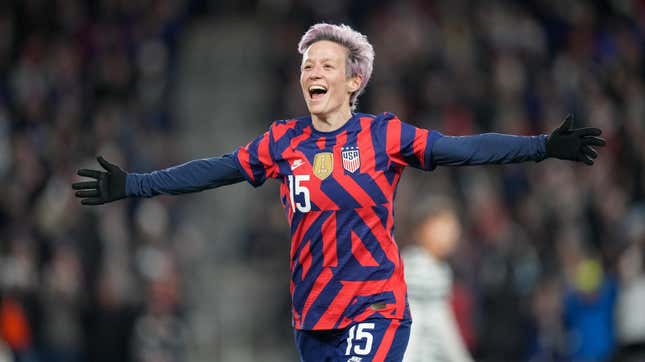U.S. Soccer Federation Finally Admits They Underpaid and Undervalued Women
The momentous settlement marks the end of a six-year fight, while illuminating just how far women’s sports still have to go.
EntertainmentEntertainment

On Tuesday morning, Megan Rapinoe, Alex Morgan, and 28 other players on the U.S. women’s national team reached a $24 million settlement with the U.S. Soccer Federation—three years after filing a lawsuit alleging they had been grossly underpaid in comparison to their male counterparts.
In a joint statement, the organizations shared that their grueling legal battle, which began in 2016 when the teammates filed a complaint to the U.S. Equal Employment Opportunity Commission, had finally come to an end. Contingent upon the ratification of the USWNT Players’ Association’s new collective bargaining agreement, the U.S. Soccer Federation will award $22 million in back pay directly to the players and place the remaining $2 million into a fund for the players’ retirements and charitable endeavors. Moving forward, the federation has also promised equal pay for the men’s and women’s national senior teams, for friendlies, tournaments, and the World Cup.
Rapinoe told Good Morning America on Tuesday: “We’re going to look back on this day and say this is the moment that U.S. Soccer changed for the better.” She also added that Trinity Rodman, the 19-year-old reigning rookie of the year who scored the highest women’s soccer 4-year contract in NWSL history for $1.1 million, deserves every penny… and owes a lot to the women who came before her.
-

-

-

-

-

-

-

-

-

-

-

-

-

-

-

-

-

-

-

-

-

-

-

-

-

-

-

-

-

-

-

-

-

-

-

-

-

-

-

-








































